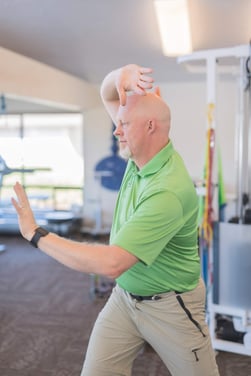 It’s not uncommon for people to describe uncomfortable physical sensations; musculoskeletal discomfort has become increasingly common. If you think about the average office worker, they will likely talk about pain in the neck, upper traps, and shoulders. Why these specific areas? When people are stressed, they have a tendency to hunch over and round the upper back. This tightens the aforementioned muscles, causing irritation. Trauma and chronic stress can have a lingering impact on our bodies; the body can unconsciously tense up, causing chronic pain.
It’s not uncommon for people to describe uncomfortable physical sensations; musculoskeletal discomfort has become increasingly common. If you think about the average office worker, they will likely talk about pain in the neck, upper traps, and shoulders. Why these specific areas? When people are stressed, they have a tendency to hunch over and round the upper back. This tightens the aforementioned muscles, causing irritation. Trauma and chronic stress can have a lingering impact on our bodies; the body can unconsciously tense up, causing chronic pain.
Somatic based exercise has begun to grow in popularity due to its therapeutic benefits. But what is it exactly? You’ve likely heard about the ‘mind-body connection’ either in writing or on TV. Think of somatic exercise as an extension of mind-body awareness. By exploring the body through gentle movement, we bring awareness to and find a way to combat the stressors in our daily lives. Moving in a conventional way (exercise, stretching, etc.) is solely focused on the physical, or outer, experience. By contrast, somatic methods help relieve stress and pain by allowing the practitioner to focus on the inner experience- moving slowly and processing how it feels.
So how did this practice come into being? In the 1970s, a philosopher and educator named Thomas Hanna was doing research into the mind-body connection. He looked into ancient methods of meditation and mindfulness originating from Asia. Hanna came to the conclusion that many physical and mental ailments could be attributed to a ‘disconnect’ between the body and mind. He sought to educate others regarding this phenomenon.
Due to Hanna’s work, somatic exercise gained traction in the western world. Mind-body awareness exercises from Asia such as yoga and tai chi continue to be popular modalities for fitness and health to this day. The practitioner achieves a relationship between mind and body by focusing on the inner self; they take into account how they’re feeling as they move through each pose. Other popular methods that were developed in the West include Laban movement analysis and the Feldenkrais method. Laban movement analysis helps a person better understand the relationship between the body and the space it inhabits. Developed by a dancer in Germany, it is still used amongst a wide array of athletes in the present day. The Feldenkrais method involves using movement and awareness to stimulate brain activity. Considered an alternative form of medicine in the clinical setting, it can help create neural pathways that improve cognition and well-being.
Somatic exercise is a beneficial addition to any wellness regimen, but can be particularly helpful to those experiencing PTSD, chronic stress, anxiety, and depression. Somatics have been shown to increase emotional awareness and physical mobility while significantly reducing pain and fatigue symptoms. If you are the aforementioned stressed office worker, take a few seconds to close your eyes, sit up tall, and slowly roll your shoulders forward and back. Think about how you feel inwardly and focus on your breathing. With each roll of the shoulders, allow the tension to ease and relax. This simple exercise is somatics at its core: awareness of how the body and mind are interconnected. Whether performing tai chi or engaging in a clinical mindfulness exercise, somatic exercise can be a great alternative form of medicine.

